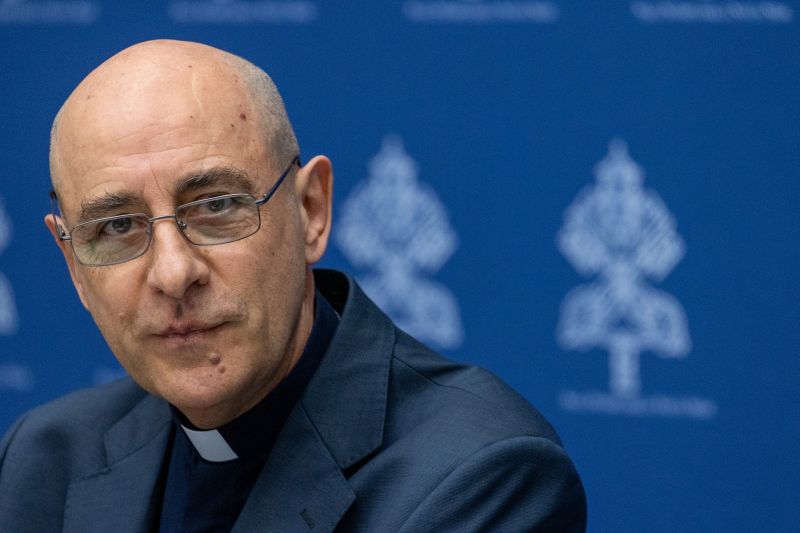 Cardinal Victor Manuel Fernández, prefect of the Dicastery for the Doctrine of the Faith, speaks during a press conference about a new Vatican document on human dignity on April 8, 2024. / Credit: Daniel Ibañez/CNA
Cardinal Victor Manuel Fernández, prefect of the Dicastery for the Doctrine of the Faith, speaks during a press conference about a new Vatican document on human dignity on April 8, 2024. / Credit: Daniel Ibañez/CNA
Vatican City, Oct 20, 2024 / 08:30 am (CNA).
Cardinal Victor Manuel Fernández, prefect of the Vatican’s Dicastery for the Doctrine of the Faith (DDF), has reportedly apologized for what he called a “misunderstanding” regarding his absence from an Oct. 18 meeting of synod delegates about a Vatican study group on women’s roles in the Church.
Attendees confirmed to CNA over the weekend that there was significant frustration among synod delegates over both the cardinal’s absence from the meeting and how the meeting itself was conducted.
More than 90 synod delegates attended the encounter expecting to engage with Cardinal Fernández and members of study group five, one of ten announced in February to examine theological questions that emerged out of the first session of the Synod on Synodality last year.
This group is charged with exploring “some theological and canonical issues around specific ministerial forms,” in particular “the question of the necessary participation of women in the life and leadership of the Church.” This includes the questions surrounding the possibility of female deacons.
Instead, attendees on Friday were greeted by two officials from the Dicastery for the Doctrine of the Faith who were not members of the study group, according to sources. The officials reportedly distributed slips of paper with an email address for submitting feedback and could not answer most questions posed by delegates.
The Pillar reported that in a statement to synod participants late on Oct. 18, Cardinal Fernández said he was “sorry for the misunderstanding” and that his absence was “due not to any unwillingness, but to my objective inability to attend on the scheduled day and time.”
The cardinal added that he had previously indicated two dicastery officials would attend the meeting in his place. He offered to meet with interested synod members on Oct. 21 “to listen to their reflections and receive any written documents from them.”
Earlier this month, Cardinal Fernández announced that study group five had shifted its focus away from the question of women deacons as an ordained group.
On Oct. 2, the cardinal said: “Based on the analysis so far...there is still no room for a positive decision” on ordaining women deacons “understood as a degree of the sacrament of holy orders.”
Fernández said the group was instead examining historical ways women have exercised authority in the Church apart from ordained ministry.
The question of women deacons has been studied and debated in recent years.
In July 2024, Cardinal Mario Grech, secretary general of the Synod of Bishops, said the DDF was studying “the women’s diaconate” within the context of its in-depth study of ministries.
However, Pope Francis has repeatedly reaffirmed that holy orders remain reserved for men.
In an interview published in October 2023, the pope said: “The question of whether some women in the early Church were ‘deaconesses’ or another kind of collaborator with the bishops is not irrelevant, because holy orders is reserved for men.”
Meanwhile, Pope Francis held two private audiences over the weekend, including participating women and the synod’s lay members. No details have been released about the content of these meetings.
He also received Cardinal Mario Grech and Cardinal Jean-Claude Hollerich, the relator-general, and Special Secretary Riccardo Battocchio.
Original Source: